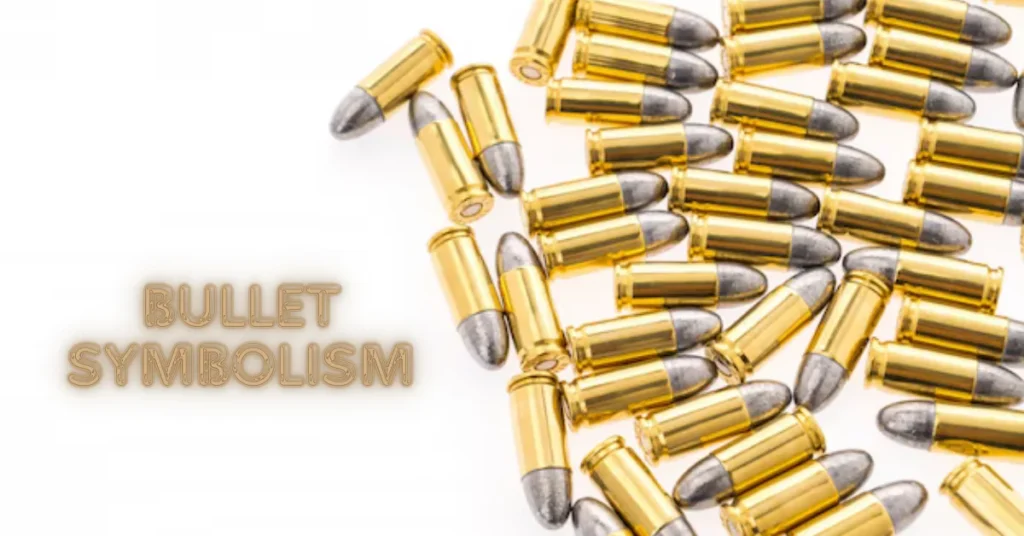Introduction to Bullet Symbolism
Bullet symbolism carries a weight that extends far beyond their physical presence. These small, metal projectiles have woven themselves into the fabric of art, culture, and even politics. From representing power and violence to embodying resilience and transformation, bullets evoke strong emotions and reactions. They tell stories that reflect our society’s complexities.
As we explore bullet symbolism throughout history and its artistic representations today, we’ll uncover how these seemingly simple objects can hold profound meanings. Join us on this journey as we dissect the layers behind bullet symbolism—an exploration sure to spark curiosity about what lies beneath the surface of these potent symbols.
Historical Background of Bullets as Symbols
Bullets have long transcended their practical function as mere ammunition. Throughout history, they have emerged as potent symbols in various cultures.
In the medieval era, bullets were often associated with power and authority. Knights wielding crossbows or cannons became embodiments of strength on battlefields. The symbolism evolved during the Industrial Revolution when firearms represented progress and innovation.
By the 20th century, bullets began to reflect societal tensions and conflicts. They became icons of war but also symbols of resistance against oppression. Movements adopted bullet imagery to convey defiance.
Artistic interpretations further deepened this symbolism. From graffiti to fine art, artists have used bullets to comment on violence and peace alike.
The duality of bullets—both protective and destructive—mirrors humanity’s complex relationship with conflict throughout history. This multifaceted symbolism continues to resonate today, igniting conversations about society’s values and choices.
The Artistic Representation of Bullets
Bullets have transcended their utilitarian purpose to become potent symbols in art. Artists explore this complex imagery, often using bullets to convey conflict, power, and the fragility of life.
Sculptors might incorporate real ammunition into their pieces, transforming destructive objects into thought-provoking installations. This juxtaposition challenges viewers to reconsider the role of violence in society.
In paintings, bullets can represent danger or freedom—a duality that sparks intense emotions. They appear as stark reminders of war while also symbolizing resilience and survival.
Street artists use bullet symbolism to comment on urban violence or political unrest. Their work transforms walls into canvases for dialogue about societal issues that demand attention.
Through photography and mixed media, creators capture moments where bullets intersect with humanity. Each portrayal invites reflection on our relationship with weapons and the narratives they carry within cultures worldwide.
Impact and Controversy Surrounding Bullet Symbolism
Bullet symbolism ignites fierce debate in various spheres. For some, bullets represent power and authority. They evoke strength and the ability to influence change.
On the other hand, many view them as reminders of violence and destruction. This duality creates tension in discussions about their meaning. Artworks featuring bullets can provoke strong emotional responses, often stirring conversations about gun control or societal safety.
The controversy extends into popular culture too. Music videos, films, and fashion frequently employ bullet motifs to convey themes of rebellion or danger. Such portrayals can glamorize violence while simultaneously critiquing it.
This complex relationship challenges artists and consumers alike to reflect on what these symbols truly signify within our cultural landscape. The impact is profound; each representation invites viewers to engage with deeper underlying issues surrounding conflict, identity, and morality without shying away from difficult conversations.
Uses of Bullet Symbolism in Different Media
Bullet symbolism appears across various media, each offering a distinct lens through which to view its meaning. In literature, bullets often represent conflict or loss. Authors use them to evoke urgency and danger in narratives that explore human nature.
Visual art frequently employs bullet imagery. Artists may create provocative pieces that challenge societal views on violence and power. The stark contrast between beauty and destruction can leave a lasting impression.
Film also utilizes this symbolism effectively. Directors often incorporate bullets to heighten tension or signify critical turning points in character arcs. A single shot can convey the weight of decisions made under pressure.
In fashion, designers have embraced bullet motifs as edgy statements against traditional aesthetics. Jewelry featuring bullet designs captivates audiences while stirring discussions about cultural implications.
Video games take this further by integrating bullets into gameplay mechanics, directly engaging players with choices that reflect moral dilemmas tied to their use.
How Bullet Symbols Reflect Society and Culture
Bullet symbols serve as a powerful lens through which we can examine societal values and cultural narratives. They often embody conflict, fear, and power dynamics present in various communities.
In art and literature, bullets symbolize violence but also resilience. Artists use them to critique societal norms or to highlight the consequences of war. This duality reflects complex human emotions and experiences that resonate deeply with audiences.
Furthermore, bullet symbolism frequently appears in fashion, where it challenges traditional ideas of beauty and strength. Designers may incorporate bullet motifs to provoke thought about gun culture or personal protection— themes that are increasingly relevant today.
Social media has amplified this dialogue by making images of bullets widely accessible. Platforms become arenas for discussion on gun control, safety, and individual rights. Through these channels, society grapples with its relationship to violence while seeking new avenues for understanding and change.
Conclusion: The Power and Significance of Bullet Symbolism Today
Bullet symbolism carries a weight that extends well beyond its physical form. It encapsulates complex emotions, societal fears, and cultural narratives. As we navigate through art, media, and everyday life, these symbols resonate deeply with the human experience.
From art installations to fashion statements, bullets represent a myriad of interpretations—protest against violence or an embrace of rebellion. They provoke thought and ignite conversations about conflict and peace.
In today’s world where imagery plays a crucial role in communication, bullet symbolism remains relevant. Whether it sparks outrage or inspires reflection, its power lies in how we choose to interpret it collectively as a society.
The significance of bullet symbolism continues to evolve as it mirrors our struggles and triumphs. Its presence serves as both a reminder of our past conflicts and an invitation to envision future possibilities.
FAQs
What is “bullet symbolism”?
Bullet symbolism refers to the use of bullets as symbols in art, culture, and media to represent a range of concepts beyond their physical function. They can signify power, violence, resilience, transformation, or societal issues, reflecting the complex interplay between these small objects and human emotions.
How have bullets been symbolically used throughout history?
Historically, bullets have symbolized power and authority in medieval warfare, progress during the Industrial Revolution, and societal conflict and resistance in the 20th century. They’ve evolved from icons of strength to symbols of defiance and change.
In what ways do artists use bullet symbolism?
Artists use bullets to explore themes of conflict, power, and the fragility of life. They might incorporate bullets into sculptures, paintings, or street art to provoke thought about violence, resilience, and societal issues, often challenging viewers to reconsider their perceptions.
What controversies surround bullet symbolism in popular media?
Bullet symbolism can provoke debate by either glorifying or critiquing violence. In music, film, and fashion, bullets might symbolize rebellion or danger, leading to discussions about gun culture and societal safety. This duality can spark strong emotional reactions and discussions on the implications of such imagery.
How do different media use bullet symbolism?
In literature, bullets often denote conflict or loss. Visual art uses them to critique societal views on violence, while film employs them to heighten tension or mark key moments. Fashion incorporates bullet motifs as edgy statements, and video games use them to engage players in moral decisions related to their use. Each medium offers a unique perspective on the symbolism of bullets.







